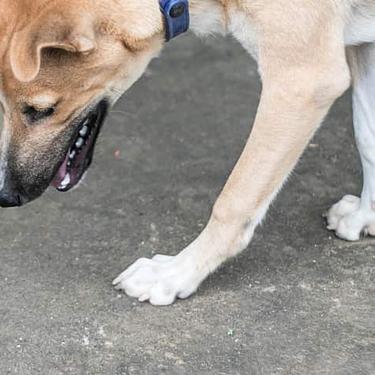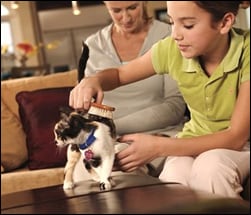
-
Find the right food for your petTake this quiz to see which food may be the best for your furry friend.Find the right food for your petTake this quiz to see which food may be the best for your furry friend.Featured products
 Adult 7+ Small & Mini Chicken & Brown Rice Recipe Dog Food
Adult 7+ Small & Mini Chicken & Brown Rice Recipe Dog FoodFor the unique nutritional needs of mature Small & Mini dogs
Shop Now Hill's Science Diet Adult Oral Care Chicken, Brown Rice & Barley Recipe Dog Food
Hill's Science Diet Adult Oral Care Chicken, Brown Rice & Barley Recipe Dog FoodClinically proven kibble technology to reduce plaque & tartar build-up
Shop Now Adult Small & Mini Lamb Meal & Brown Rice Recipe Dog Food
Adult Small & Mini Lamb Meal & Brown Rice Recipe Dog FoodFor the faster metabolism of Small & Mini dogs
Shop NowFeatured products Adult Urinary Hairball Control Chicken & Rice Recipe Cat Food
Adult Urinary Hairball Control Chicken & Rice Recipe Cat FoodActively supports the health of the whole urinary system
Shop Now Adult Indoor Chicken Recipe Cat Food
Adult Indoor Chicken Recipe Cat FoodSupports energy level and beautiful fur in indoor cats
Shop Now Hill's Science Diet Adult Sensitive Stomach & Skin Dog Food
Hill's Science Diet Adult Sensitive Stomach & Skin Dog FoodHighly digestible recipe, gentle on stomachs. Nourishes skin & promotes a lustrous coat
Shop Now -
Featured articles
 Easy DIY Dog & Cat Toys: Nine of Our Favorites
Easy DIY Dog & Cat Toys: Nine of Our FavoritesBrowse this comprehensive guide for several of our favorite DIY dog and cat toys that are sure to put a little pep in your pet's step.
Read More My Pet Ate a Lizard — What Should I Do?
My Pet Ate a Lizard — What Should I Do?Learn what to do if your pet eats a lizard, including whether they can be toxic and symptoms to keep an eye on when they've swallowed one.
Read More 15 Pet-Friendly Cities Ideal for a US Road Trip
15 Pet-Friendly Cities Ideal for a US Road TripCheck out our list of pet-friendly U.S. cities that are excellent travel options, offering off-leash dog parks and pet-friendly restaurants & hotels.
Read More -


Cats are extremely clean animals, but even the most fastidious cat will benefit from a little help with grooming, especially if they have long hair. Grooming your cat is also an excellent way to bond. Grooming is also a good opportunity to check for any skin and coat irregularities.

It's a good idea to get your cat used to being brushed and combed from an early age. This will prevent irritating knots and remove dead hair. Do this regularly and not only will it keep your cat's coat clean and healthy, it'll help reduce hairballs forming.
How often? If your cat is longhaired, you should comb her once a day, or at least a, couple of times a week. Short- haired cats only need to be brushed once a week.
What you'll need. There are specially designed grooming tools for longhaired cats, but at the very least you'll need a good brush and comb. If your cat is shorthaired, a veterinarian recommended brush is all you'll need.
Brushing. If your cat's fur isn't too tangled just give her coat a good brush. This shouldn't take longer than five to 15 minutes. Most cats love to be brushed, but if yours doesn't, let her go and try again later. Longhaired cats' fur sometimes gets matted. If you notice tangled masses of knotted hair in your cat's coat, you'll need to make time for some careful, patient brushing. Holding on to the fur just below the knot while you brush will prevent the hair from pulling. If your cat's coat is really unmanageable, you could consider professional grooming. Also consider finding the right nutrition to help reduce shedding.
Bath time. Shorthaired cats do not need to be bathed, unless they are very dirty or have allergies. But for longhaired breeds, the occasional bath will help keep her coat in good condition and prevent a build up of grease. Your vet will be happy to advise you how to bath your cat and will recommend a special cat shampoo.
Prepare for the bath. Most cats don't really like getting wet, but if you have the shampoo and towel nearby, bath-time will be quicker and easier. To make things even easier, ask someone to help — then one can hold the cat while the other does the washing.


Tasty Tips
- First of all thoroughly brush your cat's coat to get rid of knots. This will prevent them from shrinking and tightening in the water.
- If you're washing your cat in the bath, run the water before you bring your cat in. The less noise and motion there is during bath-time, the better.
- Fill the bath just high enough to reach your cat's belly. And make sure you test the water to make sure it's not too hot. You don't have to use a bathtub — a couple of bowls will do just as well. You can use one for the soapy water and the other for rinsing.
- When the bath's ready, bring your cat into the room and shut the door — you don't want a soapy cat running around the house! You may want to put cotton balls in your cat's ears to help keep water out. Then, gently lower her in to the water and reassure her with soothing words and constant physical contact.
- Gently wet the fur with a cup or wet flannel, but don't pour it directly onto your cat's head or try to submerge her.
- Once you start washing your cat she might object by howling. Don't worry, this is entirely normal and your cat is fine, just a little unnerved.
- Gently lather the shampoo into the fur, being careful around the face, ears and eyes. When you have finished shampooing, rinse the fur thoroughly as any residue may irritate her skin. If you're using a detachable showerhead to rinse your cat keep it close to her body to minimize noise and spray.
Wrap up warm. As soon as you take your cat out of the water, wrap her in a towel and gently pat the fur dry. If your cat has long hair it's particularly important to be gentle to avoid knots and tangles. You won't get her completely dry with a towel, so make sure she stays inside until she's completely dried off. And never be tempted to use a hairdryer as the hot air could burn your cat's skin.
Trimming nails. Cats scratch to keep their claws trim, but you'll need to help out too. Make sure you get your cat used to it while she's young and it'll be easier in the long-term. Ask your vet to demonstrate the correct technique and the correct clippers to use.


One of our staff authors prepared this article for you
Related products
Related articles

Put your cat on a diet without them knowing
Our low calorie formula helps you control your cat's weight. It's packed with high-quality protein for building lean muscles, and made with purposeful ingredients for a flavorful, nutritious meal. Clinically proven antioxidants, Vitamin C+E, help promote a healthy immune system.
Put your cat on a diet without them knowing
Our low calorie formula helps you control your cat's weight. It's packed with high-quality protein for building lean muscles, and made with purposeful ingredients for a flavorful, nutritious meal. Clinically proven antioxidants, Vitamin C+E, help promote a healthy immune system.

